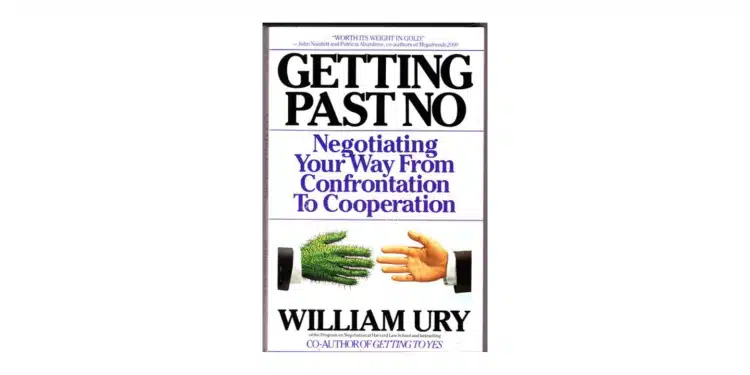Getting past no – Book review
In today’s world, our success often hinges on our ability to get people to buy into our ideas, whether it’s in our professional or personal lives. However, sometimes we encounter individuals who seem to be unwilling to cooperate, making it difficult for us to move forward. If you’ve ever found yourself in this situation, you’ll want to read “Getting Past No,” a practical book that provides a five-step strategy for overcoming difficult negotiations.
The first step involves staying calm and not reacting to provocation. If you’re unsure of what to do next, slow down the negotiation process and take time to reflect. The second step, disarming the other person, requires active listening and acknowledging their points before responding in an unexpected way to disarm them. The author offers case studies to demonstrate how to do this effectively.
In the following chapter, the author explains how to reframe the debate to turn an adversary into an ally by asking perspective questions designed to challenge their thinking. The author shares Joe Biden’s anecdote of successfully negotiating nuclear arms control with the Soviet Union as an example of how to do this.
The fourth chapter focuses on building a bridge to find a common position that both parties can agree on. The author emphasises the importance of involving the other person’s ideas in the solution, clarifying their thinking, and letting them save face when backing away from a sticky point. This chapter provides many valuable insights for negotiators of all levels.
The final chapter provides a framework for reaching an agreement. Although it may be the most complex chapter, it’s essential to help the other person see the need for a change in perspective, which increases the chance of finding common ground. The author aptly calls this chapter “Bring them to their senses, not to their knees.”
At 146 pages, “Getting Past No” is more of a reference handbook than a deep read. Nonetheless, it’s a must-read for anyone who needs to negotiate as part of their job and wants to improve their effectiveness. The five-step strategy laid out in the book is a simple framework that, if followed correctly, can make a significant difference in your negotiations.




